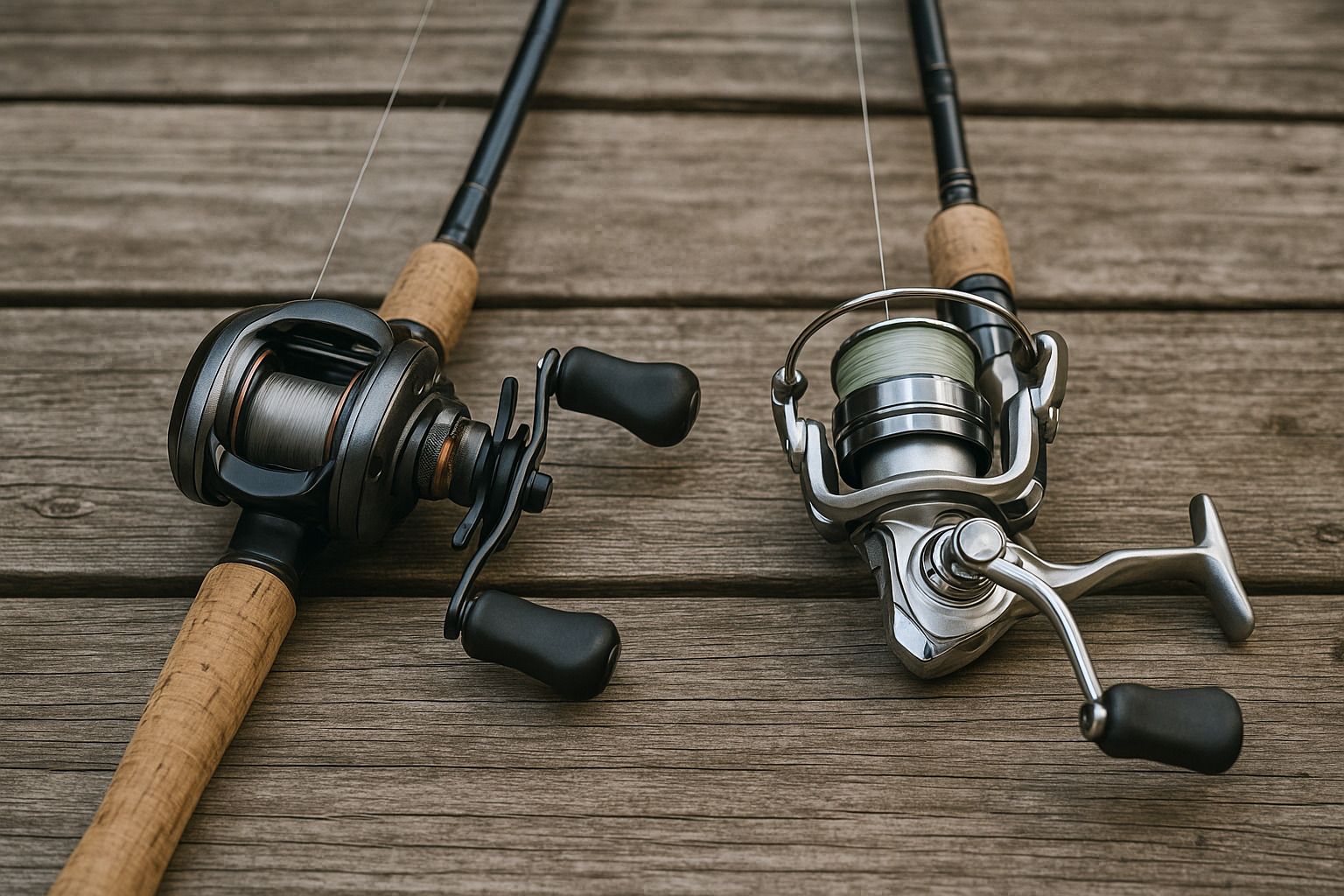The difference between baitcasting and spinning reels can shape your day on Kentucky Lake. Knowing when to reach for each one means the difference between frustration and a solid catch.
What Sets Them Apart
Spinning Reels:
- Ideal for beginners and finesse techniques
- Line is released freely off the spool
- Mounted below the rod
- Best for light lures and smaller fish
Baitcasting Reels:
- Preferred for precision and power
- Line feeds directly off a revolving spool
- Mounted above the rod
- Handles heavier lines and bigger baits
When to Use Spinning Reels
1. Light Lure Presentations
Spinning reels excel at casting small jigs, soft plastics, and live bait. The design allows for smooth casts with minimal effort.
2. Windy Conditions
Spinning reels reduce backlash, making them easier to handle when the wind picks up. The line flows off the spool without resistance, which helps with control in rougher weather.
3. Skipping Baits Under Cover
Need to skip a worm under a dock or brush? Spinning reels make this easier. They allow for sidearm flicks that don’t backlash like baitcasters.
4. Fishing with Light Line
Six- to ten-pound test line works well with spinning reels. This makes them perfect for targeting crappie, bluegill, and finicky bass during post-spawn.
5. Targeting Open Water
When there’s no heavy cover, and you’re working drop shots or weightless rigs, spinning reels offer better sensitivity and less fatigue.
When to Use Baitcasting Reels
1. Heavy Cover Situations
Thick vegetation, submerged timber, and rocky points call for heavier line and stronger drag systems. Baitcasters handle braided and heavier fluorocarbon lines without issue.
2. Accuracy in Casting
Baitcasting reels give you pinpoint control. Whether flipping a jig into tight brush or pitching into standing timber, they land where you want them.
3. Power Fishing Techniques
Crankbaits, spinnerbaits, chatterbaits, and topwater frogs require torque and smooth retrieves. Baitcasters provide the gear ratios needed for constant casting and retrieving.
4. Longer Casts with Heavy Lures
When chucking Carolina rigs or swimbaits across points, a baitcaster will throw farther with less effort. The revolving spool works with the weight, not against it.
5. Fighting Big Fish
A five-pound smallmouth or a ten-pound catfish pulls hard. Baitcasting reels offer better drag systems and line capacity for those fights.
Pros and Cons Overview
| Feature | Spinning Reels | Baitcasting Reels |
|---|---|---|
| Ease of Use | Beginner-friendly | Steeper learning curve |
| Casting Light Lures | Excellent | Limited control |
| Accuracy | Moderate | High |
| Line Management | Less prone to backlash | Prone to backlash if mishandled |
| Power & Torque | Limited | Excellent for heavy-duty fishing |
| Line Weight Range | Best for 6–10 lb | Handles 10–25+ lb lines |
| Maintenance | Simple | Requires regular tuning |
Which One Should You Choose at Kentucky Lake?
- Fishing from the bank or kayak: Start with a spinning reel. You’ll cover more water and handle changing conditions more easily.
- Flipping docks, punching mats, or fishing deep ledges: Baitcasters are the way to go.
- Targeting crappie, bluegill, or schooling bass: Spinning reels shine for this.
- Hunting trophy largemouth near cover: A baitcaster gives you the power and control needed to bring them out.
Final Takeaway
Use spinning reels for finesse, light tackle, and situations where wind or casting angle matters. Use baitcasting reels for precision, heavy tackle, and when fighting bigger fish or working thick cover. The right tool depends on the species, conditions, and bait style. Keep both in your arsenal, and let Kentucky Lake show you when to pull each one out.
